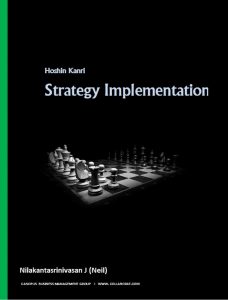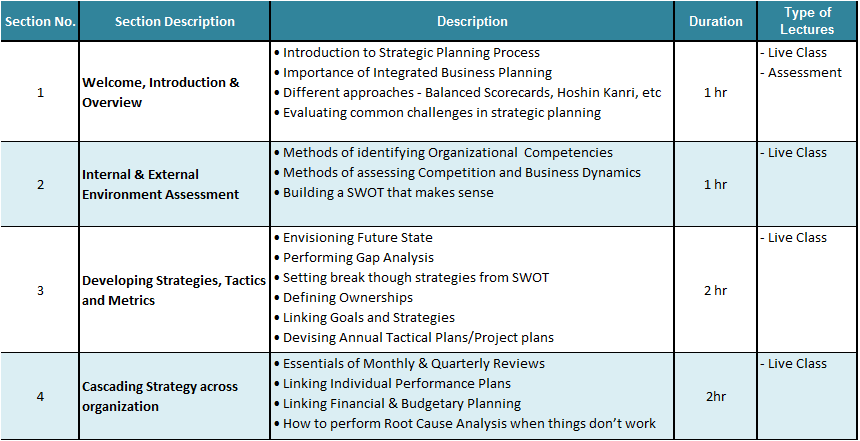
Metrics and OKRs serve different purposes and complement each other in various ways.
Metrics are specific, measurable values that help organizations track their performance and progress towards specific goals. Metrics are typically used to evaluate performance and make data-driven decisions. They provide a clear understanding of what is being measured and how progress is being made.
OKRs (Objectives and Key Results), on the other hand, are a goal-setting framework that provides a clear and specific structure for setting and tracking goals. OKRs help organizations align their efforts towards achieving specific and measurable objectives, and provide a clear understanding of what success looks like and how it will be achieved.
When used together, metrics and OKRs can provide a powerful toolkit for driving performance and growth. Metrics provide a clear understanding of what is being measured and how progress is being made, while OKRs provide a clear structure for setting and tracking goals. This can help organizations make data-driven decisions and align their efforts towards achieving specific and measurable objectives.
In summary, even if a company has a strong metrics culture, OKRs can still provide significant value by providing a clear structure for setting and tracking goals and aligning efforts towards achieving specific and measurable objectives.
#nilakantasrinivasan-j #canopus-business-management-group #B2B-client-centric-growth #OKR

Grading in OKRs refers to the process of evaluating the progress made towards achieving the objectives and key results set in the OKRs. The grading process helps to determine the level of success achieved and provides feedback on areas that need improvement.
Here’s how to grade OKRs:
- Frequency: OKRs should be graded regularly, typically at the end of each quarter or half-year. This helps ensure that progress is being monitored regularly and that any necessary adjustments can be made in a timely manner.
- Who should grade: OKRs can be graded by the individuals who set the objectives, their managers, or a designated team within the organization. It is important to ensure that the grading is done objectively and consistently across the organization.
- Criteria: The criteria for grading OKRs should be based on the specific objectives and key results set in the OKRs. For example, if the objective is to increase sales by a certain percentage, the criteria for grading might be the actual sales figures achieved.
In general, OKRs are graded on a scale of 0-1, with 0.0 indicating no progress and 1.0 indicating full attainment of the objective. Grading provides a clear picture of progress and allows individuals and teams to focus on the areas where they need to improve.
It is important to note that the grading process should be a supportive and constructive feedback mechanism, rather than a source of stress or negativity. The focus should be on learning and continuous improvement, rather than on assigning blame or punishment for not achieving objectives.
OKRs can be graded at different frequencies, depending on the nature of the objectives and the goals of the organization. Here are two common approaches to grading OKRs:
End of cycle grading: OKRs are graded at the end of each quarter or half-year, after the set timeframe for achieving the objectives has passed. This approach is suitable for objectives that are long-term or have a significant impact on the organization and its operations.
Weekly or monthly grading: OKRs are graded on a regular basis, such as every week or every month. This approach is suitable for objectives that are more short-term or have a smaller impact on the organization. This approach provides more frequent feedback and allows individuals and teams to adjust their focus and priorities on an ongoing basis.
Ultimately, the frequency of grading should be determined by the nature of the objectives and the goals of the organization. Both end of cycle and frequent grading have their benefits, and the approach that is chosen should align with the overall strategy and goals of the organization.
Grading OKRs too often can lead to several problems, including:
- Over-emphasis on short-term results: Frequent grading can create a focus on short-term results, rather than on long-term goals and objectives. This can lead to a reduction in the strategic focus of individuals and teams and a lack of commitment to achieving meaningful and impactful results.
- Increased stress and pressure: Grading OKRs too frequently can increase stress and pressure on employees, especially if the grading process is overly punitive or negative. This can lead to decreased motivation and engagement, and may even lead to burnout or high turnover rates.
- Decreased creativity and innovation: If grading OKRs is done in a rigid and prescriptive manner, it can stifle creativity and innovation. Individuals and teams may be reluctant to take risks and try new approaches if they are constantly being judged and evaluated.
- Reduced focus on learning and continuous improvement: If grading OKRs is done in a way that emphasizes fault-finding and punishment, rather than learning and continuous improvement, it can reduce the focus on growth and development. This can lead to a lack of progress and an inability to adapt to changing conditions and requirements.
In general, it is important to ensure that the grading process is supportive, constructive, and focused on continuous improvement, rather than on punishment or blame. This can be achieved by setting clear criteria for grading, involving employees in the grading process, and providing regular feedback and coaching to help individuals and teams achieve their goals
#nilakantasrinivasan-j #canopus-business-management-group #B2B-client-centric-growth #OKR

There is a strong linkage between a company’s vision and strategy and their OKRs. OKRs (Objectives and Key Results) are a tool used to align and drive progress towards a company’s overall vision and strategy.
Here’s how to create the linkage between a company’s vision and strategy and their OKRs:
- Start with the vision and strategy: Clearly define the company’s vision and overall strategy, including the goals and objectives that support the vision and strategy.
- Align OKRs with vision and strategy: Ensure that the objectives and key results of each team and individual are aligned with the company’s overall vision and strategy. This helps ensure that everyone is working towards a common goal and that progress is being made towards the overall vision and strategy.
- Communicate the linkage: Clearly communicate the linkage between the company’s vision and strategy and the OKRs to all stakeholders, including employees, managers, and executives. This helps ensure everyone is aware of the overall goals and objectives and understands how their work contributes to the vision and strategy.
- Regularly review and adjust: Regularly review and adjust the OKRs to ensure they are aligned with the company’s vision and strategy. This helps keep the focus on the most important goals and objectives and ensures progress is being made towards the overall vision and strategy.
By creating a clear linkage between a company’s vision and strategy and their OKRs, organizations can ensure that everyone is working towards the same goals and that progress is being made towards achieving the overall vision and strategy.
Google has a company purpose of “to organize the world’s information and make it universally accessible and useful.” This purpose serves as the guiding principle for the company and informs their overall strategy.
Google’s OKRs are aligned with this purpose and focus on improving their products and services to better serve their customers. For example, one of their OKRs might be “Improve search results relevance by X% within the next quarter.” This objective is aligned with their company purpose of making information accessible and useful, and the key result (improvement in search results relevance) helps measure progress towards that goal.
Another example might be “Expand Google Maps coverage to X new countries within the next year.” This objective aligns with the company purpose of organizing information, and the key result (expansion of coverage to new countries) helps measure progress towards that goal.
By aligning their OKRs with their company purpose, Google is able to focus on the most important goals and objectives and ensure that everyone is working towards the same vision. This helps drive progress towards achieving their company purpose and ensures that their products and services continue to improve and meet the needs of their customers.
#nilakantasrinivasan-j #canopus-business-management-group #B2B-client-centric-growth #OKR

Here’s a general roadmap for implementing OKRs (Objectives and Key Results) across an organization:
- Awareness and education: Start by raising awareness and educating all stakeholders, including employees, managers, and executives, about OKRs, their benefits, and how they will be used in the organization.
- Define the OKR process: Define the process for setting, tracking, and achieving OKRs, including who will be responsible for setting and tracking OKRs, how often they will be reviewed, and how progress will be communicated.
- Define OKRs for teams: Work with teams to define their objectives and key results. Encourage teams to set ambitious, but realistic, goals that align with the organization’s overall strategy.
- Pilot phase: Launch a pilot phase with a select group of teams to test the process and make any necessary adjustments. This phase should provide feedback to refine the OKR process for the organization.
- Roll out OKRs to the rest of the organization: Based on the results of the pilot phase, roll out the OKR process to the rest of the organization. Provide ongoing support and training to help teams get started and ensure they are effectively using OKRs.
- Monitor progress and adjust: Regularly monitor progress and adjust the OKR process as needed to ensure it is effective and efficient. Celebrate successes and learn from failures to continuously improve the OKR process.
- Make OKRs a habit: Make OKRs a habit in the organization by regularly setting and tracking progress, celebrating achievements, and encouraging teams to continuously improve.
This roadmap should provide a general framework for implementing OKRs, but the specific timeline, approach, and details will vary depending on the size and complexity of the organization and the specific goals and objectives of the OKR implementation.
#nilakantasrinivasan-j #canopus-business-management-group #B2B-client-centric-growth #OKR
I asked one question to a handful of employees across various levels and functions in an organization, starting from the CEO – ‘What is your company’s strategy?’ I was startled to learn that nearly every one had their own version of the company’s strategy. Some were close and others way apart from the originally conceived strategy. This might sound like an aberration and communication issue to you. I beg to present that this is merely a symptom of an underlying problem in the organization. When different functions and roles in the organization perceive strategy differently, that in itself is the starting point for an implementation failure.
While strategy formulation is traditionally driven by well devised and tested methods, it is widely accepted that there is lack of definitive method for strategy implementation.
I have put together an e-book titled “Hoshin Kanri: Strategy Implementation”. The purpose of this book is to provide necessary knowledge and insights for a leader who has to steward strategy implementation in his/her organization. I can assure you that it will be a good starting point. From my experience, I can observe that Hoshin Kanri fills that gap in strategy implementation by providing an robust method to deal with complex scenarios.
Further Assistance
- I would be happy to talk to you regarding:
- Evaluating existing strategy implementation practices in your organization
- Guiding in annual strategy offsite
- Facilitating Goals & Strategies cascade vertically & horizontally
- Build cross functional ownership and accountability
- Hoshin Kanri Deployment
- Coaching on Execution Excellence to build strong second level teams for execution

Consider the following facts about Business Strategy:
- While 80% of organizations have 3 year ‘Goals’ they hardly have any defined strategy!
- 80% of all organizations that have well-defined strategies fail to execute them well.
- Less than 5% of employees understand an organization’s business strategy.
- 60% of organizations don’t link strategy and budgeting.
- Large enterprises are no way better than the smaller ones. In fact, most large enterprises have a well-crafted business strategy, but they fail in Execution!
Source: Large Research Organizations & Consulting firms such as Wharton, Renaissance Consulting, etc
No matter how great your Strategy is, it wouldn’t make any difference, as long as it is not implemented well.
Remember, unless your strategy isn’t grossly wrong, mostly strategies would yield equally good results as long as implementation is seamless.
Rolls-Royce and Ford have completely different strategies and both of them are successful. Think about it.
One real reason for your organization to fail is not wrong Strategy, but its poor execution. To ensure that does not happen, there are certain skills and experience that are critical :
- Bulky strategy dossiers don’t matter when it comes to implementation. People who submit such dossiers and leave implementation to you are not the right people to implement strategy. Instead, you will need change agents wo are going to work side-by-side to implement your strategy.
- When it comes to strategy implementation, industry or sector expertise doesn’t matter. Remember that only to advise you on the next strategic move, sector experience is critical. Instead look for down-to-earth professionals with functional expertise in organizational change, metrics deployment, goal setting, etc.
- Professionals with proven functional expertise in areas such as Business Transformation, Change Management, Finance, Risk, Technology & Leadership Development would really matter.
- Most leaders approve the show of aggression as good execution-ability. But execution is a skill that requires good precision, patience, judgment, clarity and persistence. Strategy Implementation is both an art and science of execution.
In a nutshell, the right strategy implementation professionals will stitch together your organization to fulfil your strategy.
There are the top 10 challenges in strategy implementation in the order of significance. Does your organization face these challenges? And what are you doing about it?
- Lack of ‘Individual Ownership & Joint Accountability’ for organization goals
- Non-synchronized effort between leaders/functions in applying a strategy
- Budgetary Planning, Strategic Planning & Performance Planning non-synchronized
- Leaders give great talks on prioritization, but they don’t prioritize strategic initiatives
- Strategic Initiatives aren’t scoped well – punctuated with long duration & unrealistic goals
- Too many strategic initiatives run concurrently leading to strategic fatigue
- Most strategic initiatives bet on the same best guys around leading naturally to under performance
- Strategic Initiatives evolve from a wish list rather than from environment scanning
- No QUANTITATIVE measures of success for strategic initiatives
- No systematic mechanism to adapt strategy to changes in external & internal environments
Interview: Organizational Strategy Challenges & Solutions
Extract of an interview of Neil published in Consultants Review Magazine about Organizational Strategy Challenges and Solutions
The economy stands at a crucial juncture now and constant endeavour for excellence and accuracy has come to be more pivotal than ever before.
The goal now is to focus on industry needs with a futuristic perspective, in order to foresee the norms of tomorrow. Canopus Business Management Group (CBMG) is a business services firm that focuses on strategy implementation & business transformation to make them future fit, and it is this approach that has brought them a fair amount of success already. Incepted in 2009, by the MIT educated Nilakantasrinivasan Janakiraman(Neil), CBMG started operations in Chennai, with the vision of bringing something fresh to the consulting space. Read More
Course Highlights
- Learn about the basic elements of good goal and strategy plan
- Assess where your organization stands in strategy execution
- Understand what it takes to move the plan from paper to implementation
- Create a broad outline of information, resources and people required
Course Description
Annual Goal and Strategy Setting is a very complex process and is largely driven by the company’s culture and tradition. But there are few important elements to this exercise, without which the whole exercise will be waste. In this course, you will learn about the basic elements of good goal and strategy planning exercise, assess where your organization stands when it comes to strategy execution, so that you can create a broad outline to pull your entire organization together around a single game plan.
What makes this course unique?
In my personal experience, many organizations do this activity like any other team outing and end up missing several important elements which impacts the organization’s chances of meeting their goals.
This is a no-nonsense crash course with practical approach to lead an annual goal and strategy session.
Who should take this course?
If you are responsible for coordinating Annual Goal and Strategy Planning for your organization or your department, then you will certainly find this course useful.
- Finance Managers
- Strategy Team Members
- Business Heads
- Analysts
Course Start Date: March 15, 2015
Course Package:
- 1 Week of study
- 6 Hour lecture covered in 3 days. 2 Hours of commitment each day
- Assess where your organization stands when it comes to strategy execution
Course Fees: Rs.5000
Make Payment here

Many organisations are focused on long term vision but loose sight of what challenges they face daily & weekly.
Teams get frustrated when leaders drive them crazy on vision but don’t address on ground reality.
Sign-up for collaborat newsletter


